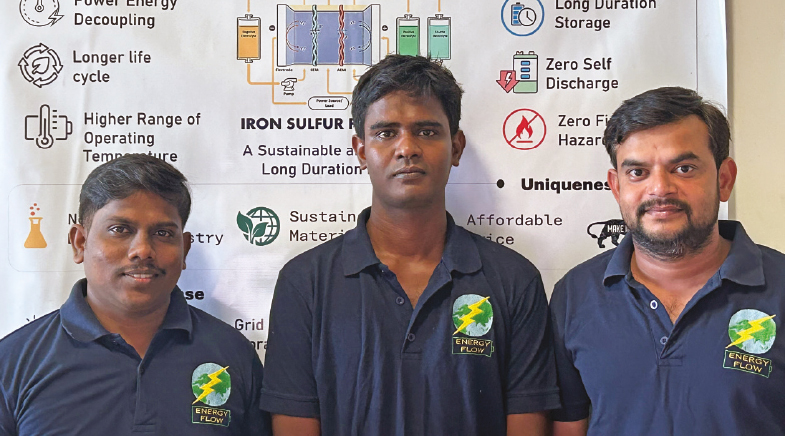Shots in the arm
-
- from Shaastra :: vol 04 issue 10 :: Nov 2025

A compelling story of how India emerged as the global hub of vaccines.
Loyalty and betrayal. Rivalry in the lab and in business. Victims and heroes. Love and altruism. These are all compelling elements of a racy potboiler. You can also find them within the pages of non-fiction, in the story of vaccination.
Ameer Shahul's Vaccine Nation: How Immunization Shaped India traces the journey of modern medicine's fight against infectious diseases, putting India centre stage in the narrative. It juxtaposes the evolution of preventive medicine against the backdrop of colonisation, the freedom movement and an independent India, even as it takes account of global developments, such as the dominance of Europe in medicine for 200 years, and the theatre shifting to the American shores in the 20th century.
The author unearths details that science and history textbooks tend to ignore. For instance, the Chapekars of Maharashtra are known to history students as the brothers who assassinated senior British officers in Poona in 1897. What is not as well known is that the officers were killed for their oppressive handling of the plague outbreak.
Shahul brings alive characters lost to time. Take Devajammani, the 12-year-old Mysore queen who became the poster girl for the smallpox vaccine, with an East India Company-commissioned painting depicting her pointing to her vaccinated arm.
It is not easy to make science non-fiction engaging, but the author does it, with engaging anecdotes and cliffhanger narratives.
A few tales are ironic. The author narrates the story of vaccine pioneer Waldemar Haffkine, who rose to fame in India, and was pilloried — and deified after his death — by the administration, which later named an institute after him. Then there is G.P. Talwar, on whose work the hCG contraceptive vaccine is based (which is also being developed as a cancer vaccine). He faced a similar treatment at the hands of the administration. He, however, found other venues to continue his research. Ronald Ross is known for his work on malaria, but not everybody is aware that it was his long campaign that led to re-establishing Haffkine's name and repute — a story that stands out among the more sordid tales of researchers pulling each other down.

Some anecdotes are of love and anguish. Cyrus Poonawalla's Serum Institute of India was set up because his beloved horse died for want of snake anti-venom.
RE-EMERGENCE OF INDIA
Shahul packs these stories into his explanation of the science behind the medical breakthroughs and the waxing, waning, and re-emergence of India in this saga. The chapters are short: each begins with an engaging anecdote, and many end on a cliffhanger. It is not easy to make science non-fiction engaging, but he does so with ease. Even in the chapters that deal with recent developments, he relates untold accounts, such as how there were no monkeys to be found during the COVID-19 lockdown to conduct primate studies for vaccines. A special team was dispatched to the forests, and it took them 20 days to capture 20 monkeys.
The book doesn't shy away from the setbacks caused by political and administrative shortcomings in India. Sanjay Gandhi's mass sterilisation campaign of the 1970s hit vaccination drives, with people becoming wary of government health workers armed with syringes. Worse still was the decision in the early 1980s to proceed with DPT (diphtheria, pertussis, typhoid) vaccinations despite a shortage of polio vaccines. It was known that the DPT shot, given without prior polio vaccination, triggered poliomyelitis. The oversight paralysed two lakh children. From that low point to the success of the Pulse Polio programme, which India pioneered, thanks to the efforts of virologist Thekkekara Jacob John, is a story in itself.
The narrative becomes a tad weary in the second half, mainly because of the alphabet soup caused by the acronyms or abbreviations of a multitude of institutes and vaccines. Also, the author switches from DPT to DTP, often in the same paragraph. Both abbreviations are used to describe the vaccine, but the inconsistency jars. There are other instances of editorial slippages: the U.S. hospital Johns Hopkins is listed as John Hopkins in some places. These are minor irritants and do not undermine the otherwise detailed research and commendable storytelling by the author as he traces the evolution of India from a testing ground to a vaccinator of the world.
Have a
story idea?
Tell us.
Do you have a recent research paper or an idea for a science/technology-themed article that you'd like to tell us about?
GET IN TOUCH














